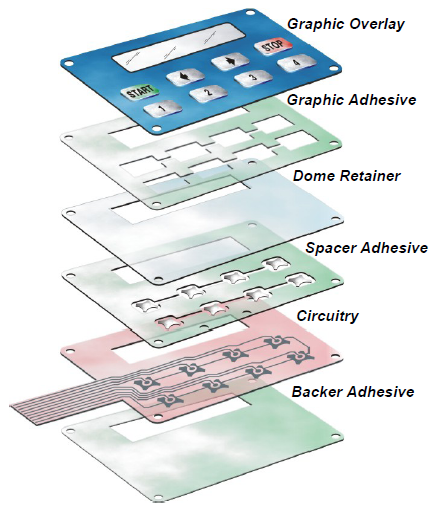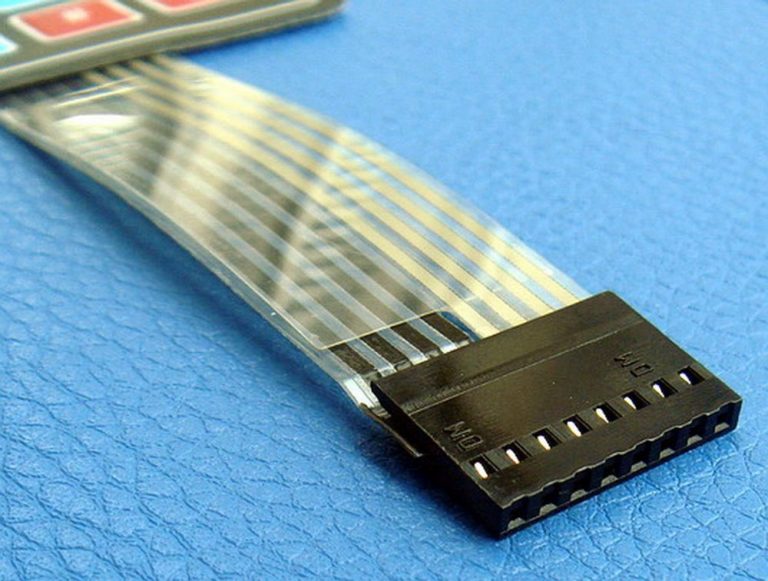Understanding the Importance of Membrane Switches in User Interfaces
Membrane buttons are integral elements in the design of efficient customer interfaces, facilitating not only performance but additionally improving aesthetic allure and user communication. As we check out the numerous benefits and future patterns linked with Membrane innovation, it becomes clear that these switches are much more than just components; they stand for a merging of advancement and practicality.
What Are Membrane Buttons?

The spacer layer, which consists of sticky properties, enables for the separation of the circuit layer from the overlay, making sure that the button stays in a non-activated state till pressed. When pressure is used to the overlay, it compresses the spacer layer, connecting the void and finishing the circuit in the underlying layer. This design not only decreases the physical room needed for typical mechanical buttons yet also enhances the longevity of the gadget, as Membrane buttons are typically resistant to dust, wetness, and other environmental variables.
Generally located in applications varying from consumer electronics to clinical devices, Membrane switches are essential to contemporary innovation, providing a reliable and straightforward interface that lines up with contemporary layout requirements.
Advantages of Membrane Buttons
While various button innovations exist, Membrane Switches offer unique benefits that make them particularly preferable in various applications. Among the primary advantages of Membrane buttons is their compact design, which enables for space-saving executions in devices where property is limited. Their thin profile not just improves aesthetic appeal yet also helps with light-weight building and construction.
An additional considerable advantage is their resistance to ecological aspects. Membrane switches are commonly secured versus dampness, dust, and contaminants, making them ideal for use popular settings, such as clinical devices and industrial devices. This resilience extends the lifespan of the button, decreasing upkeep costs and boosting integrity.
In addition, Membrane buttons can be customized to meet particular design demands, integrating special graphics and shades that improve customer communication. Their responsive comments choices can likewise be customized to supply an enjoyable customer experience. In addition, Membrane switches are affordable, particularly in high-volume applications, as they can be produced successfully.
Applications in Various Industries

In the consumer electronics industry, Membrane switches prevail in devices such as microwaves, washing devices, and push-button controls. Their tactile comments and aesthetic choices enhance user experience while offering a sleek, modern look. Additionally, automotive producers utilize Membrane buttons in control panel controls and infotainment systems, where area is limited, and user involvement is vital.
Furthermore, the industrial field leverages Membrane switches in control panels for machinery and tools, permitting for user-friendly operation in frequently harsh atmospheres. Their resistance to chemicals and wetness ensures long life and integrity in these applications. Generally, the adaptability of Membrane Switches adds dramatically to their extensive use, making them vital in different technological domain names.
Design Factors To Consider for Membrane Buttons

When designing Membrane buttons, several essential considerations need to be taken into account to make sure optimal performance and customer experience. First look what i found of all, the selection of materials is important; selecting durable, high-grade substrates can improve the button's longevity and resistance to environmental aspects such as wetness and temperature level fluctuations.
Second of all, the design of the graphic overlay must focus on quality and convenience of use. Icons and text should be legible, and the format must help with user-friendly interaction (membrane switches). Furthermore, responsive feedback is important; including a responsive dome or other devices can improve the customer experience by giving physical confirmation of activation
Another essential factor is the switch's electric performance. Designers should make sure that the conductive traces are appropriately developed to minimize resistance and avoid signal interference. This involves assessing the required actuation pressure and making sure compatibility with the digital elements they will user interface with.

Future Fads in Membrane Innovation
As modern technology remains to development, Membrane switches are poised to advance considerably, driven by advancements in products and manufacturing methods. One arising fad is the incorporation of sophisticated products, such as conductive inks and flexible substrates, which boost durability and reduce the general weight of Membrane buttons. These products not just improve the tactile reaction however additionally enable the design of switches that can endure harsher environmental conditions.
Moreover, the assimilation of touch-sensitive modern technologies is transforming traditional Membrane Switches into even more interactive user interfaces. Capacitive touch sensors installed within Membrane button panels can give an extra instinctive and receptive individual experience, lining up with the expanding demand for sleek, modern designs in consumer electronic devices.
In addition, innovations in printing strategies, such as electronic and 3D printing, enable rapid prototyping and modification of Membrane switches. This versatility allows manufacturers to react a lot more swiftly to market demands and consumer choices.
Finally, sustainability is ending resource up being a substantial emphasis, with makers discovering environmentally friendly products and procedures. As these trends unravel, the future of Membrane technology assures improved functionality, aesthetic appeal, and ecological responsibility, strengthening their function in advanced customer interfaces across numerous markets.
Conclusion
To conclude, Membrane Switches represent an essential element in the design of interface, combining capability with aesthetic adaptability. Their advantages, consisting of resilience and resistance to ecological elements, make them ideal for diverse applications across numerous industries. Thoughtful design considerations boost user interaction and experience. As innovations in technology proceed, the evolution of Membrane buttons is expected to further fine-tune interface, driving development and enhancing use in an increasingly complicated technical landscape.
Membrane buttons are indispensable parts in the layout of reliable customer interfaces, promoting not just capability yet additionally improving visual charm and individual interaction.Membrane Switches offer as an essential component in various user interfaces, facilitating a smooth communication in between individuals and electronic tools.While countless button innovations exist, Membrane Switches offer unique benefits that make them especially desirable in different applications.Furthermore, Membrane buttons can be customized to meet details layout demands, incorporating distinct graphics and colors that improve customer interaction.In final thought, Membrane Switches represent an essential element in the design of customer interfaces, integrating functionality with visual versatility.